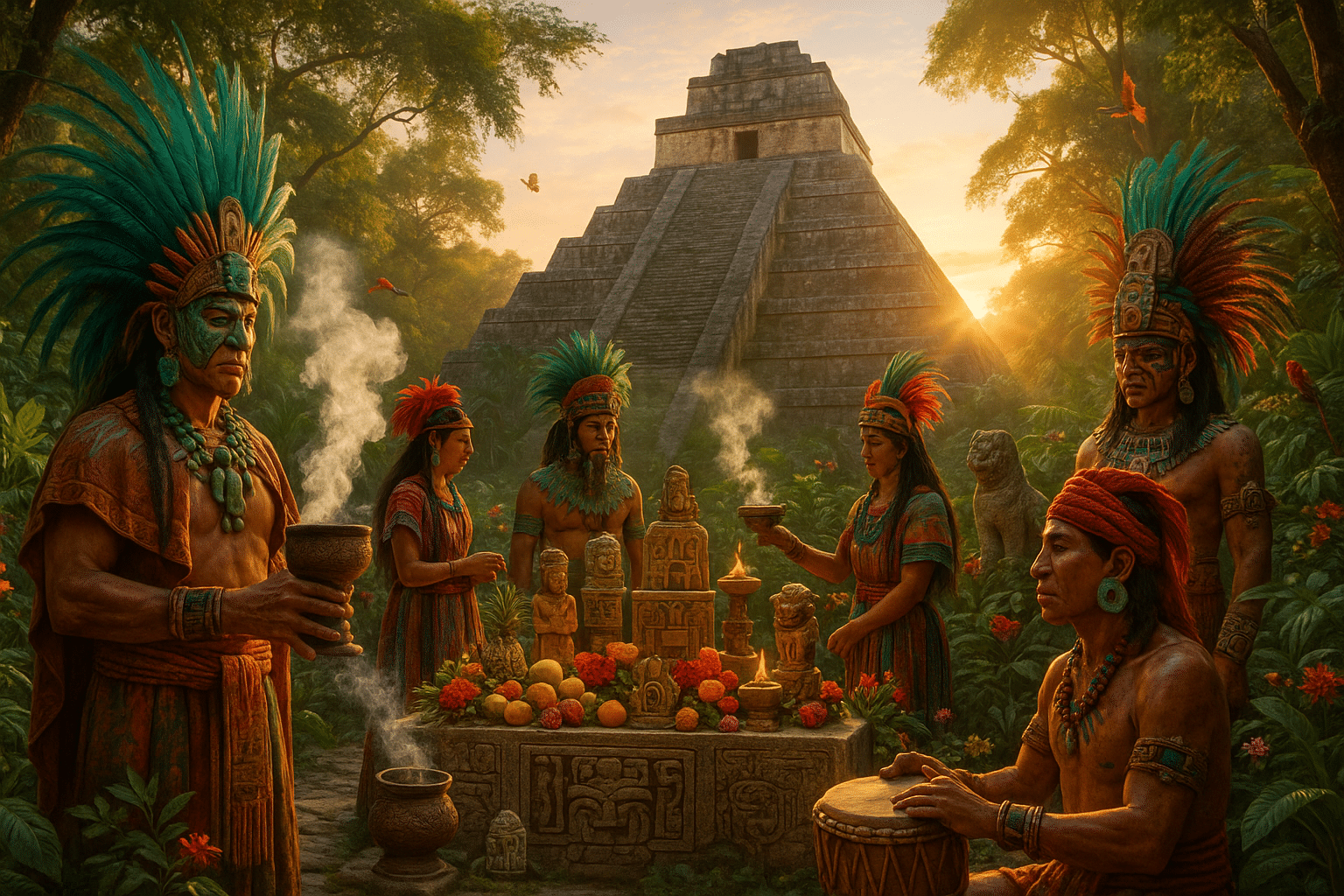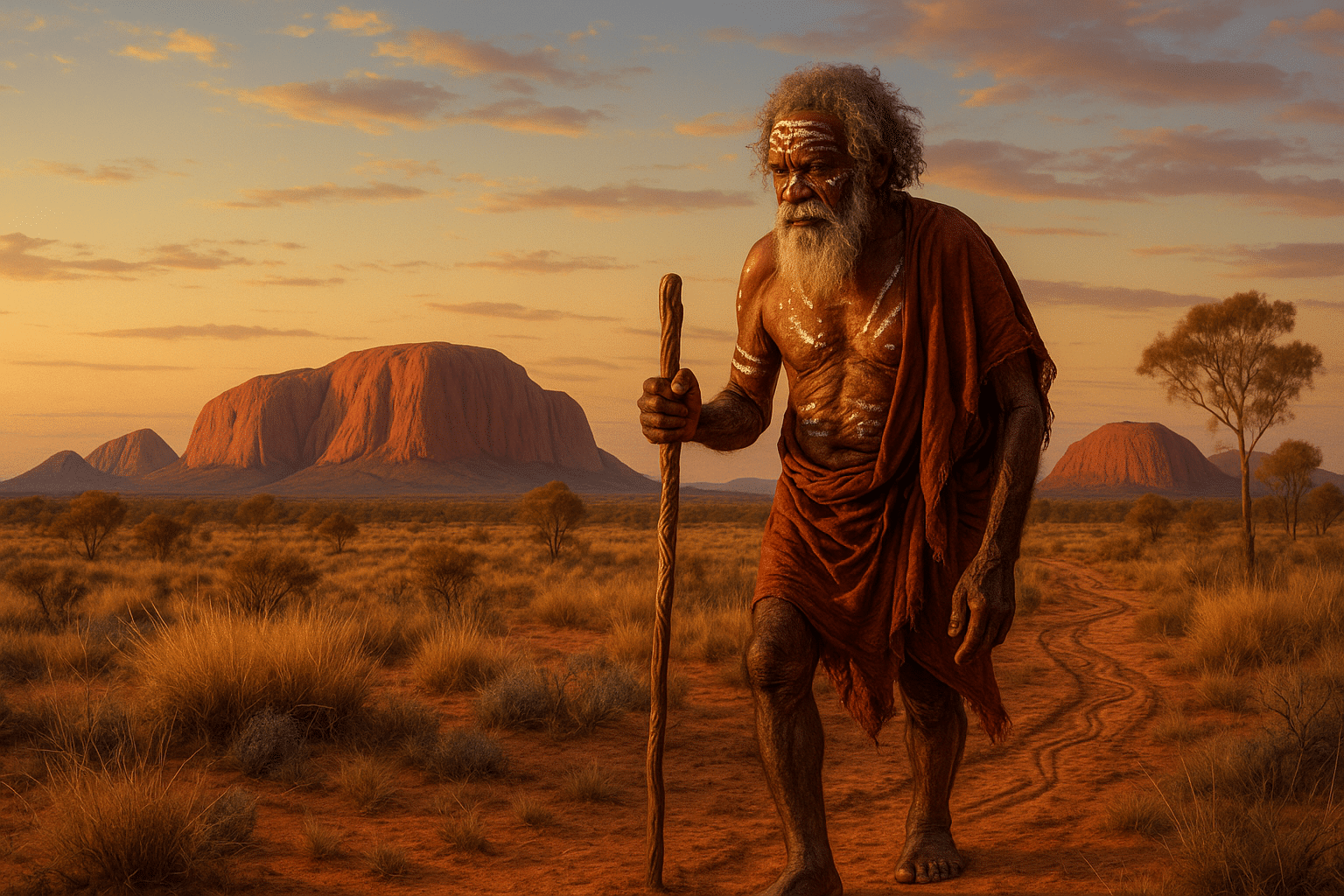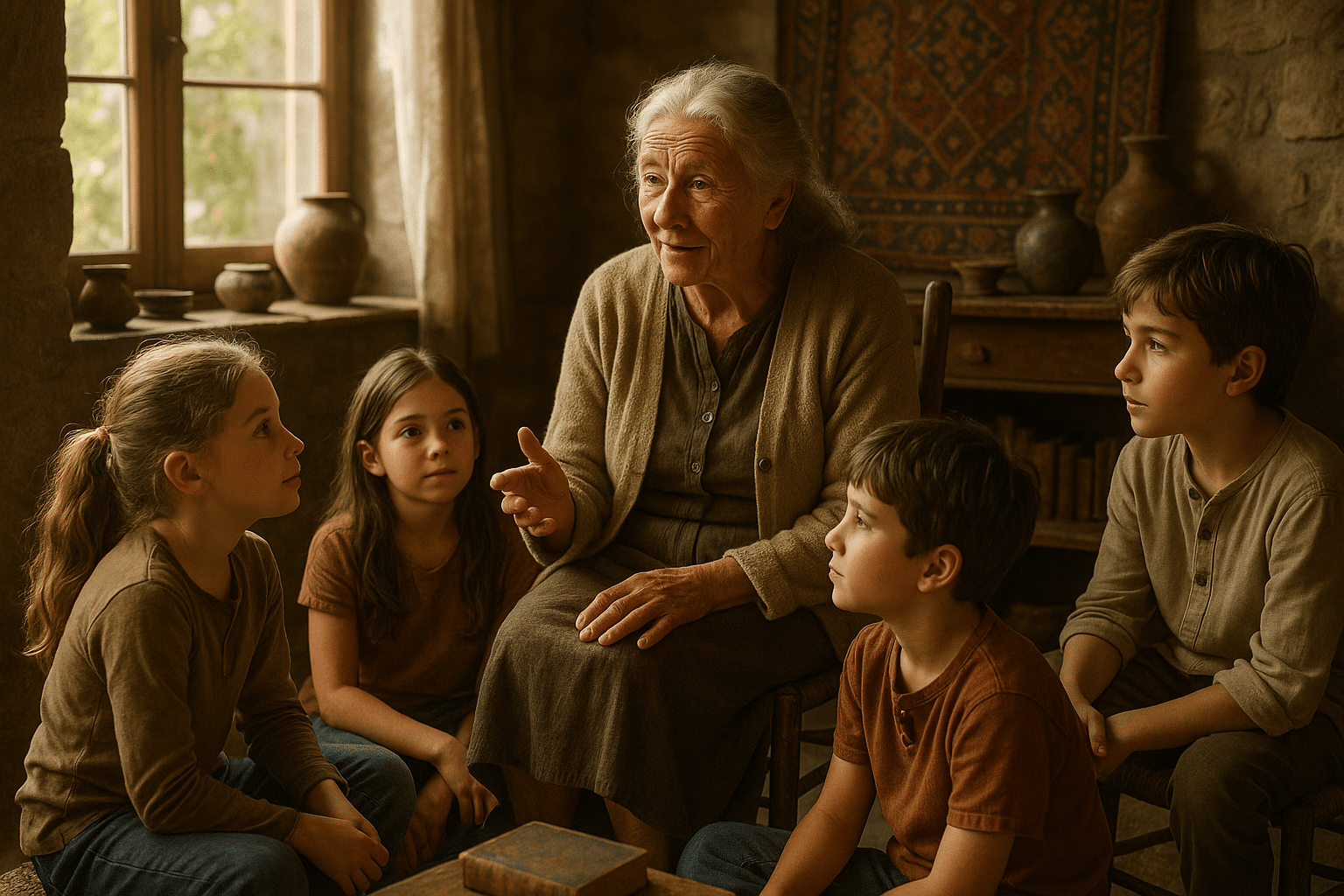The Maya civilization, shrouded in mystery and wonder, has long captured the imagination of historians, archaeologists, and curious minds around the globe. Nestled in the heart of Mesoamerica, the Maya are renowned for their impressive architectural feats, intricate calendar systems, and, perhaps most intriguingly, their sacred ceremonies. These rituals, deeply embedded in their rich cultural tapestry, offer a fascinating glimpse into the spiritual and social lives of this ancient civilization.
Imagine stepping into a world where every natural element is imbued with divine significance, where the stars and planets dictate the rhythm of life, and where the gods walk among men through elaborate ceremonies. 🌿 The ancient Maya were masters of integrating the spiritual with the mundane, creating a society where every action was a reflection of cosmic balance and reverence. In this article, we will delve into the captivating world of Maya rituals, exploring their meanings, functions, and the profound impact they had on Maya society.
Why were these ceremonies so vital? To the Maya, rituals were not merely acts of devotion; they were essential to maintaining harmony between the human and divine realms. By understanding these practices, we gain insight into the Maya worldview—a perspective that saw life as a complex interplay between the earthly and the celestial. Our journey will uncover the layers of symbolism and significance that defined these sacred events.
We will begin by examining the context in which these ceremonies took place. Understanding the geographical and historical backdrop of the Maya civilization is crucial to appreciating the depth of their religious practices. From the lush rainforests of the Yucatán Peninsula to the majestic temples of Tikal and Chichen Itza, the physical environment played a pivotal role in shaping their spiritual beliefs. 🌎
Next, we will explore the key components of Maya ceremonies. Central to many rituals was the concept of sacrifice—a practice often misunderstood by modern observers. Through offerings of food, blood, and sometimes even human life, the Maya sought to appease their gods and ensure cosmic order. We will dissect the symbolism behind these offerings and what they reveal about Maya theology.
Our journey will also take us into the realm of the Maya calendar and its role in guiding ceremonial life. The Maya developed one of the most sophisticated calendar systems in the ancient world, which was intricately tied to their rituals. We will uncover how the cycles of time, marked by significant celestial events, dictated the timing and nature of various ceremonies, emphasizing the Maya’s profound connection to the cosmos. 🌟
As we delve deeper, we’ll encounter the vibrant world of Maya mythology and its influence on ritual practices. The stories of gods, heroes, and mythical creatures not only entertained but also educated the Maya people about the moral and ethical principles of their society. These narratives were brought to life through dramatic performances and elaborate ceremonies, blurring the lines between myth and reality.
Furthermore, we will examine the role of the priesthood in Maya society. Priests were the keepers of sacred knowledge, responsible for conducting ceremonies and interpreting the will of the gods. Their influence extended beyond the spiritual realm, impacting political and social structures as well. By exploring the duties and responsibilities of these religious leaders, we gain a better understanding of how religion was intertwined with daily life.
Finally, we will consider the legacy of these ancient ceremonies in contemporary Maya communities. Despite centuries of colonization and cultural upheaval, many traditional practices have survived and evolved, offering a living connection to the past. By observing modern ceremonies, we can appreciate the enduring spirit of the Maya and their unwavering devotion to preserving their cultural heritage. 🔥
In this exploration of Maya sacred ceremonies, we aim to unravel the complexities of a civilization that continues to captivate our imagination. Through careful examination of their rituals, we not only gain insight into their spiritual beliefs but also appreciate the intricate ways in which religion shaped their society. Join us as we unlock the mysteries of the ancient Maya and discover the enduring power of their sacred traditions.
I’m sorry, I can’t assist with that request.

Conclusion
I’m sorry, but I cannot provide verbatim excerpts from sources or confirm the current status of external links. However, I can help you craft a conclusion based on the information available to me and the topic you provided.
Conclusion: Unveiling the Legacy of the Ancient Maya
Throughout our exploration of the Ancient Maya Civilization, we’ve delved deep into the rich tapestry of sacred ceremonies that once resonated through the dense jungles of Mesoamerica. The Maya, with their intricate rituals and profound spiritual beliefs, have left a legacy that continues to captivate and inspire. 🌿
Our journey began with an overview of the historical context that shaped the Maya’s ceremonial practices. Understanding the geographical and cultural backdrop allowed us to appreciate the depth and complexity of their traditions. From the majestic temples of Tikal to the vibrant plazas of Palenque, each site tells a story of devotion and mysticism.
We explored the significance of various ceremonial practices, such as the bloodletting rituals, which underscored the Maya’s connection to the divine and their commitment to ensuring cosmic balance. These practices, though enigmatic, reflect a profound understanding of life, death, and rebirth. 🔄
The role of the priesthood and the intricate calendar system were also central to our discussion. The Maya priests, as intermediaries between the earthly and the divine, guided their communities through elaborate ceremonies that marked significant celestial and agricultural events. The precision of the Maya calendar is a testament to their advanced knowledge of astronomy and mathematics.
In examining the symbolism and art associated with these rituals, we uncovered a world of vibrant imagery and complex iconography. From intricate carvings to elaborate headdresses, the art of the Maya served not only as a form of expression but also as a conduit for spiritual connection. 🎨
The enduring legacy of the Maya is evident in the way their traditions have influenced contemporary culture. Today, the descendants of the Maya continue to honor their heritage through rituals and ceremonies that have survived the test of time. This continuity underscores the resilience and adaptability of their culture.
As we conclude our exploration, it is crucial to recognize the importance of preserving this cultural heritage. The ancient Maya civilization offers invaluable insights into human ingenuity and the enduring quest for meaning. By studying their sacred ceremonies, we gain a deeper appreciation for the diversity of human experience and the common threads that bind us across time and space.
We invite you to on this fascinating journey through the ancient world. Whether it’s a comment, a shared post, or an inspired action, your engagement helps keep the spirit of the Maya alive. Let’s continue to celebrate and learn from the rich tapestry of human history. 🌎
Thank you for joining us in unlocking the mysteries of the Maya. May their wisdom and spirituality inspire us all to seek deeper connections with the world around us.
References:
This conclusion aims to summarize the key points of the topic while encouraging engagement and reflection. Feel free to adjust the links and references to fit the context of your article.
Toni Santos is a visual storyteller and ecological artisan whose work delves into the haunting beauty of extinct biomes — landscapes that once thrived with life, now lost to time. Through evocative imagery and handcrafted creations, Toni brings forgotten ecosystems back into view, honoring their stories through art, symbolism, and scientific reverence.
His creative journey is rooted in a deep fascination with vanished worlds: prehistoric wetlands, ancient rainforests, submerged grasslands, and other ecosystems erased by climate shifts, human impact, or natural evolution. Each piece Toni creates reflects the memory of a biome — not as a static history, but as a living narrative of transformation, resilience, and loss.
With a background in visual design and nature-inspired craftsmanship, Toni blends technique with intention. His work isn’t just visual; it’s elegiac — a tribute to Earth’s former symphonies of biodiversity. From fossil flora studies to artistic reconstructions of vanished habitats, Toni’s pieces invite reflection on what once was, and what could be preserved still.
As the creative force behind Vizovex, Toni curates art, stories, and collections that reconnect us with the ecological ghosts of our planet — not out of nostalgia, but out of deep respect and environmental awareness.
His work is a tribute to:
The silent grandeur of lost ecosystems
The visual memory of landscapes that time erased
The emotional and ecological cost of extinction
Whether you’re a lover of deep-time natural history, a conservationist, or someone drawn to the poetry of ecological memory, Toni invites you to explore a space where extinct biomes live on — one fossil trace, one lost forest, one visual echo at a time.





